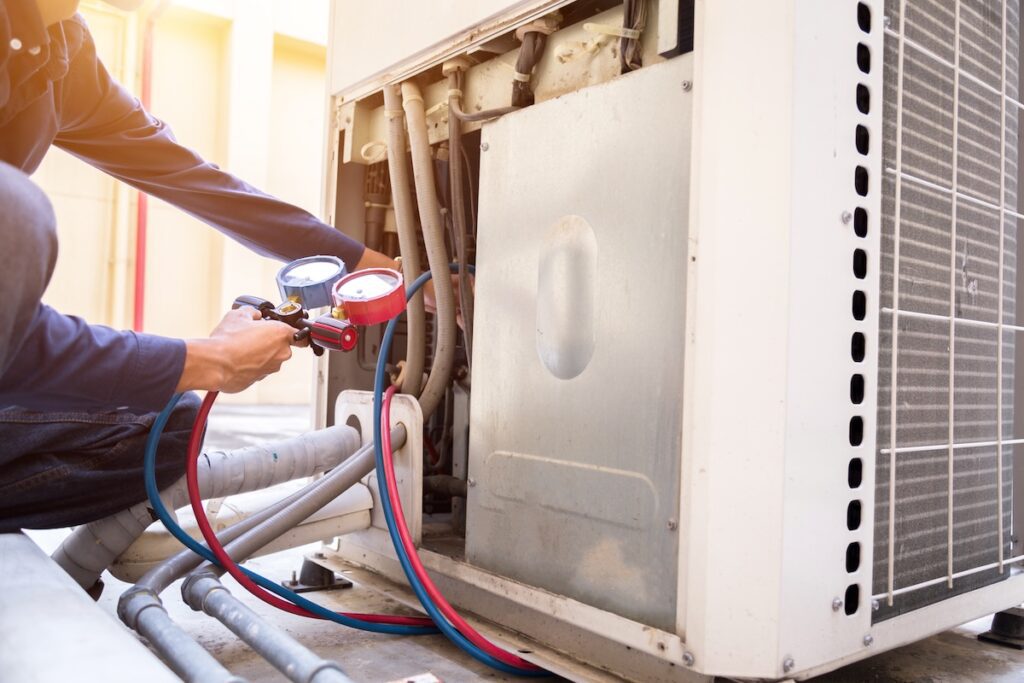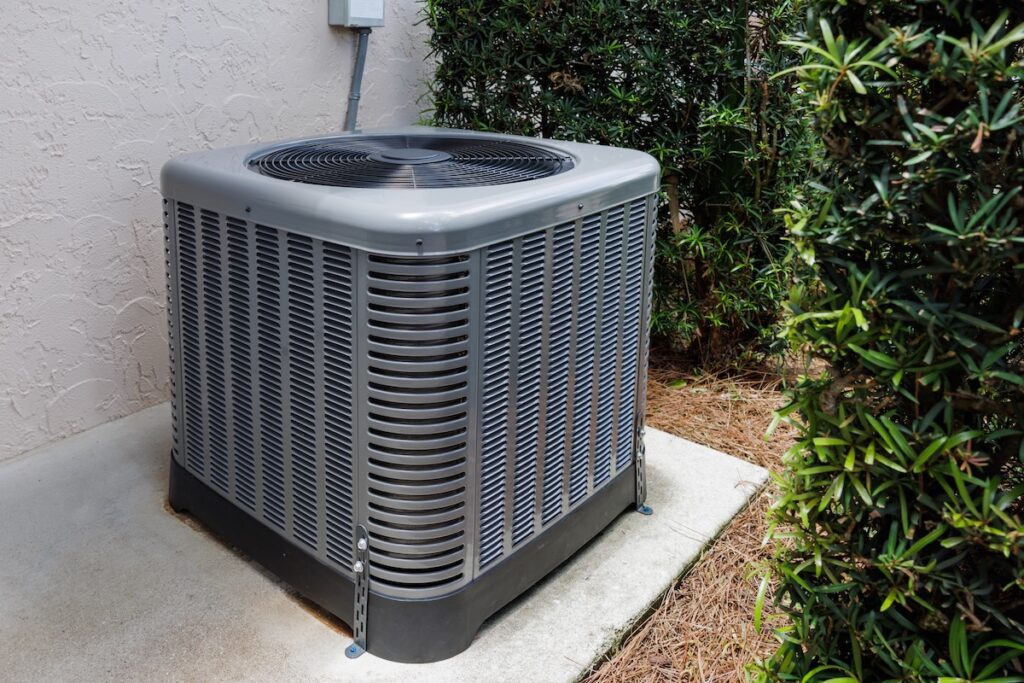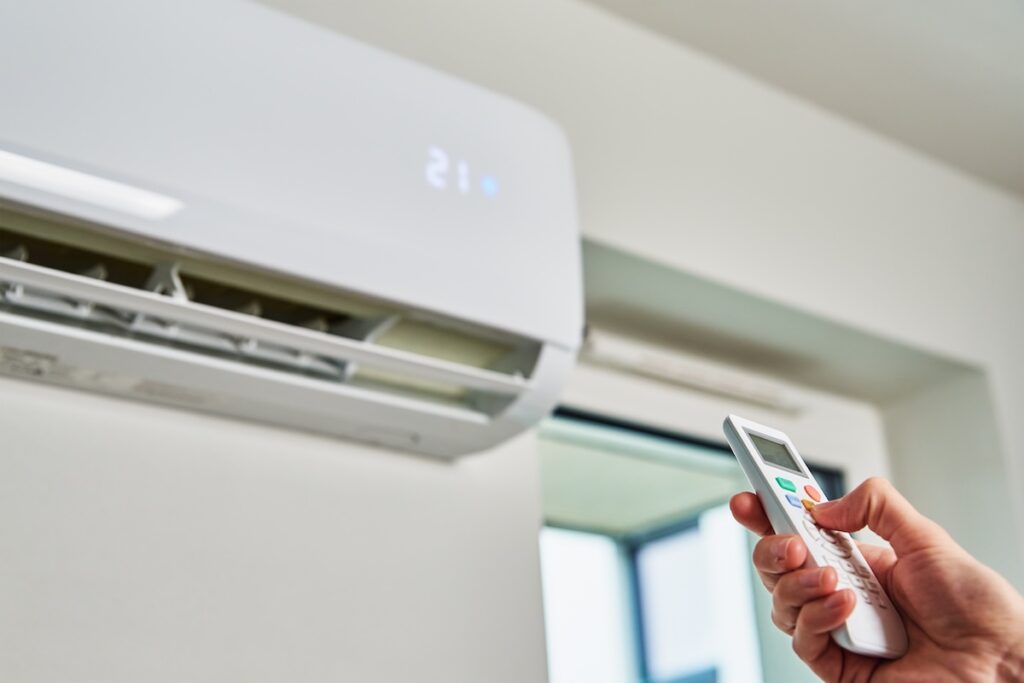If you’ve ever experienced a sweltering summer day with a broken air conditioner, you know just how essential a functional cooling system is to your home. Fortunately, understanding the basics of air conditioning repair can save you time, money, and unnecessary stress.
This guide will help you understand common air conditioning problems, steps to repair your system, when to call a professional, and how regular maintenance can prevent issues altogether. Here’s what you’ll learn:
- Common air conditioning problems
- How to repair an air conditioner in 6 steps
- How preventative maintenance protects your investment
🤔 Common Air Conditioning Problems

Air conditioners are complex systems with many components working together to keep your home cool and comfortable. When something goes wrong, it can often feel overwhelming to figure out the issue. However, most AC problems stem from a few common causes. Understanding these issues can help you identify problems early and maintain your system effectively. Here are some of the most frequent air conditioning problems homeowners encounter:
- Restricted airflow from blocked filters or ducts makes your system less efficient. A dirty air filter is an easy fix but often overlooked.
- Refrigerant leaks force your system to work harder, reducing cooling effectiveness. Fixing this requires professional help due to handling regulations.
- Frozen evaporator coils, often caused by low refrigerant or restricted airflow, can leave your home feeling warmer. Regular maintenance helps prevent this.
- Electrical or sensor failures, such as wire corrosion or sensor issues, can disrupt your AC’s ability to turn on or maintain proper cycles.
- Compressor wear, caused by overworking due to low refrigerant or dirty coils, can lead to cooling failure, as the compressor is the core of your AC system.
✅ 6 Steps to Repair an Air Conditioner

While many air conditioning repairs are best left to the professionals, there are some simple tasks homeowners can tackle safely. Here’s a step-by-step guide to repairing your air conditioner.
1. Verify Power and Thermostat Settings
Begin by confirming that your air conditioner is receiving power and is switched on. Check the power cord to ensure it’s securely plugged into a functioning outlet. If the unit doesn’t appear to be getting power, inspect the outlet by plugging in another device to confirm it’s working. If the outlet isn’t providing power, there could be a problem with your home’s electrical system, such as a power outage or a tripped breaker.
Next, examine the thermostat settings. Ensure it’s set to “cool” mode and adjust the temperature to a few degrees lower than the current room temperature to activate the cooling system. Sometimes, the issue lies in incorrect thermostat programming or settings. If your thermostat is battery-operated, consider replacing the batteries, as low power can prevent it from functioning correctly. If you’re using a smart thermostat, double-check the app settings to ensure it’s programmed correctly.
2. Replace or Clean the Air Filter
A clogged or dirty air filter is one of the most common reasons for air conditioner issues. Locate the air filter, which is typically found near the intake vent or inside the air handler. If your system uses a disposable filter, remove it and inspect the surface for dust, dirt, and debris. If the filter looks dark or clogged, replace it with a new one. Filters should generally be replaced every 1-3 months, depending on usage and the manufacturer’s recommendations.
For reusable or washable filters, carefully remove the filter and follow the cleaning instructions provided by the manufacturer. Typically, this involves rinsing the filter with water and allowing it to dry completely before reinstalling. Neglecting to dry the filter thoroughly can lead to mold growth, which can worsen air quality and reduce system efficiency. A clean filter improves airflow, helps maintain indoor air quality, and prevents your AC from overworking, which can extend its lifespan.
3. Inspect the Circuit Breaker
If your air conditioner fails to turn on, the problem could be a tripped circuit breaker. Locate your home’s electrical panel, often found in the basement, garage, or utility room. Open the panel and look for the breaker labeled for your air conditioning system. If the breaker is in the “off” position or appears to be halfway between “on” and “off,” it has likely tripped. Reset the breaker by flipping it to the “off” position and then back to “on.”
If the breaker trips again as soon as you turn on the AC, this indicates a potential electrical issue. Avoid repeatedly resetting the breaker, as this could cause further damage or pose a safety risk. Instead, contact a licensed electrician or HVAC technician to diagnose the problem, which could be caused by an electrical short, overloaded circuit, or faulty AC components.
4. Clear the Condenser Unit
The condenser unit plays a critical role in your AC system by releasing heat from your home to the outside. Over time, the unit can become blocked by dirt, leaves, and other debris, which reduces efficiency and can lead to overheating. To maintain optimal performance, inspect the condenser unit, which is typically located outside your home.
Before cleaning, turn off the power to the unit for safety by switching off the corresponding breaker or using the power switch near the condenser. Remove any visible debris, such as leaves, grass, or sticks, from the area around the unit. Trim back any overgrown vegetation to maintain at least two feet of clearance on all sides, allowing proper airflow.
Using a garden hose with a gentle spray setting, carefully rinse off dirt and dust from the exterior of the condenser. Avoid using high-pressure water, as it can damage the delicate fins or internal components. For more thorough cleaning, use a fin comb or soft brush to straighten bent fins and remove stubborn debris. Regular maintenance of the condenser unit ensures efficient operation and helps prevent breakdowns.
5. Check for Ice Build-Up
Ice or frost on the evaporator coils is a clear indicator that your air conditioner isn’t functioning properly. Ice buildup can occur due to restricted airflow, refrigerant issues, or prolonged operation in hot conditions. Turn off the AC immediately to prevent further damage to the system and allow the ice to melt. Depending on the extent of the buildup, this may take several hours, so be patient.
While waiting, inspect the vents throughout your home to ensure they are open and unblocked. Blocked vents can restrict airflow, contributing to ice formation. Check and clean the air filter as well, as a dirty filter is a common cause of poor airflow.
If the ice continues to form after cleaning the filter and ensuring proper airflow, there may be a more serious issue, such as low refrigerant levels or a malfunctioning component. In this case, contact an HVAC technician for a professional assessment. Operating an AC unit with ice buildup can lead to further damage and higher repair costs, so addressing the issue promptly is critical.
6. Test Your System
Once you’ve completed all the troubleshooting steps, it’s time to test your air conditioner. Turn the system back on and monitor its performance over the next several hours. Pay close attention to whether the air coming from the vents is cool and whether the airflow is strong and consistent.
If your AC is cooling effectively and running without any unusual noises or interruptions, the issue may have been resolved. However, if the system is still not functioning as it should, it’s time to call in a professional HVAC technician. They can perform a detailed inspection, identify any underlying problems, and carry out the necessary repairs to restore your AC’s efficiency.
Routine maintenance, such as cleaning filters and ensuring proper airflow, can help prevent many common issues. By staying proactive and addressing problems early, you can keep your air conditioner running smoothly and extend its lifespan.
👨🔧How Preventative Maintenance Protects Your Investment

The best way to avoid costly repairs is through regular maintenance. By scheduling annual tune-ups and keeping your system in top condition, you can:
Extend the Lifespan of Your Unit
Regular maintenance is the key to making your HVAC system last for years to come. By scheduling routine checkups and addressing minor issues early, you can keep your unit in top condition, reducing wear and tear on critical components. This not only extends the life of your investment but also saves you the hassle and expense of replacing your system sooner than necessary. Proper care ensures your HVAC unit remains reliable, providing comfort to your home for as long as possible.
Improve Energy Efficiency and Reduce Utility Costs
An HVAC system that’s regularly maintained works at peak efficiency, using less energy to heat or cool your home. Over time, dirt, debris, and wear can cause your system to work harder, driving up your energy bills. By cleaning filters, tuning up components, and optimizing performance, you’ll lower your utility costs while reducing your environmental footprint. A well-maintained system not only saves money but also helps you contribute to a greener planet by consuming less energy.
Catch Small Issues Before They Become Major Problems
Small problems, like a clogged filter or a worn-out belt, can escalate into major issues if left unaddressed. Routine inspections give technicians the chance to identify these minor concerns before they lead to costly repairs or system failures. For instance, a simple refrigerant leak left unchecked can damage your compressor or other components, leading to expensive breakdowns. Regular maintenance helps you avoid unexpected surprises and ensures your HVAC system runs smoothly when you need it most.
Keep Your Home Comfortable Year-Round
No one wants to face extreme temperatures without a functioning HVAC system. Regular maintenance ensures your unit provides consistent heating and cooling, keeping your home comfortable no matter the season. By fine-tuning your system, technicians can ensure it runs efficiently and reliably, keeping your home cozy during winter’s chill and cool during summer’s heat. With routine care, you can trust your system to deliver consistent and dependable comfort all year long.
🛠️ AC Repair Guide
When it comes to air conditioning repair, you need a team you can rely on to get the job done right. At Palmetto Air Conditioning, we pride ourselves on delivering fast, dependable service backed by years of expertise. Our experienced technicians are dedicated to keeping your system running smoothly, ensuring your home stays cool and comfortable no matter the weather.
Whether you need a quick fix, preventative maintenance, or expert advice, we’re here to help. Don’t settle for anything less than the best—contact Palmetto Air Conditioning today and let us handle all your air conditioning needs. Schedule your service now and experience the difference!
